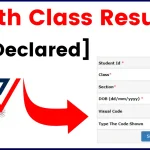Here’s a friendly collection of simplification questions and answers designed to help you sharpen your skills. These questions cover a wide variety of subjects, ensuring that you get a good mix of practice material. Enjoy the simplicity and dive into the practice!
Math Questions:
-
What is the result of 80 + 20 ÷ 4? Answer: 85
-
Simplify 5 × 6 – 8 + 3. Answer: 25
-
What is the value of 16 ÷ 4 + 7 × 2? Answer: 18
-
Simplify 45 ÷ 9 × 5. Answer: 25
-
Solve 12 + 9 ÷ 3. Answer: 15
-
What is 8 × 3 + 6 ÷ 2? Answer: 30
-
Simplify 120 ÷ 8 + 15. Answer: 30
-
What is the result of 50 – 6 × 4? Answer: 26
-
Simplify 30 ÷ 6 + 10 × 3. Answer: 40
-
What is 8 + 72 ÷ 9? Answer: 16
-
Simplify 10 + 15 ÷ 3. Answer: 15
-
What is the value of 7 × 8 – 10 + 5? Answer: 51
-
Simplify 36 ÷ 6 + 12 × 2. Answer: 30
-
Solve 45 ÷ 5 + 20 – 7. Answer: 18
-
What is 6 + 72 ÷ 9 × 3? Answer: 30
-
Simplify 35 + 45 ÷ 9. Answer: 40
-
What is the result of 100 – 25 ÷ 5? Answer: 95
-
Simplify 7 × 3 + 2. Answer: 23
-
What is 90 ÷ 10 × 8? Answer: 72
-
Simplify 16 ÷ 2 + 5 × 3. Answer: 31
Science Questions:
-
What is the boiling point of water in Celsius? Answer: 100°C
-
Simplify the formula for calculating speed. Answer: Speed = Distance ÷ Time
-
What is the chemical symbol for water? Answer: H₂O
-
What is the pH level of pure water? Answer: 7
-
Which element has the atomic number 6? Answer: Carbon
-
What is the process by which plants make their food? Answer: Photosynthesis
-
What is the chemical symbol for oxygen? Answer: O
-
What is the unit of force in the International System of Units (SI)? Answer: Newton (N)
-
What is the formula for the area of a circle? Answer: Area = πr²
-
What is the SI unit for temperature? Answer: Kelvin (K)
-
What gas do plants release during photosynthesis? Answer: Oxygen
-
What is the formula for calculating density? Answer: Density = Mass ÷ Volume
-
What is the boiling point of mercury in Celsius? Answer: 356.7°C
-
What is the atomic number of hydrogen? Answer: 1
-
What is the most abundant element in Earth’s atmosphere? Answer: Nitrogen
-
What is the process by which a solid changes directly into a gas? Answer: Sublimation
-
What is the SI unit of mass? Answer: Kilogram (kg)
-
What is the formula for acceleration? Answer: Acceleration = Change in Velocity ÷ Time
-
What is the main component of natural gas? Answer: Methane (CH₄)
-
What is the force that attracts objects towards the center of the Earth? Answer: Gravity
General Knowledge Questions:
-
Who wrote the novel “Romeo and Juliet”? Answer: William Shakespeare
-
What is the capital of Japan? Answer: Tokyo
-
Which planet is known as the “Red Planet”? Answer: Mars
-
Who invented the telephone? Answer: Alexander Graham Bell
-
Which element is essential for human life and found in the air we breathe? Answer: Oxygen
-
What is the currency used in the United Kingdom? Answer: Pound Sterling (GBP)
-
Who painted the Mona Lisa? Answer: Leonardo da Vinci
-
Which country is known as the “Land of the Rising Sun”? Answer: Japan
-
What is the largest continent by land area? Answer: Asia
-
What is the main language spoken in Brazil? Answer: Portuguese
-
Who is the founder of Microsoft? Answer: Bill Gates
-
What is the longest river in the world? Answer: Nile River
-
Who was the first man to walk on the moon? Answer: Neil Armstrong
-
What is the name of the world’s largest ocean? Answer: Pacific Ocean
-
What is the largest country in the world by land area? Answer: Russia
-
What is the tallest mountain on Earth? Answer: Mount Everest
-
Who invented the light bulb? Answer: Thomas Edison
-
What is the currency of the United States? Answer: U.S. Dollar (USD)
-
Which is the most populous country in the world? Answer: China
-
What is the national flower of India? Answer: Lotus
By practicing these simplification questions, you can improve your knowledge across multiple subjects while keeping things easy and interesting. Keep exploring and enjoy the learning journey!
Simplification Questions: Mastering the Basics for Easy Problem Solving
Simplification questions are a critical part of learning across various subjects, especially in mathematics and science. These questions focus on simplifying complex expressions, allowing students to solve problems faster and more efficiently. Whether you are a beginner or an advanced learner, mastering simplification techniques can significantly boost your problem-solving skills.
Simplification involves reducing mathematical expressions to their simplest form. This process helps to streamline the problem-solving approach and provides clarity in understanding complex topics. For example, basic operations like addition, subtraction, multiplication, and division, when combined, may form expressions that seem challenging at first glance. However, by simplifying them step-by-step, learners can achieve quicker results and gain a deeper understanding of the topic.
In mathematics, simplification questions typically involve algebraic expressions, fractions, or arithmetic problems. These questions require students to break down expressions into simpler terms by applying the correct order of operations. Simplification questions also play an essential role in subjects like physics and chemistry, where equations can get quite complex. Knowing how to simplify these equations allows students to focus on the core concepts and relationships in each subject.
Key Strategies for Simplification Questions
-
Master the Order of Operations: One of the essential aspects of simplification is understanding the order in which mathematical operations should be performed. The BODMAS rule (Brackets, Orders, Division and Multiplication, Addition and Subtraction) ensures that each problem is approached correctly. Always start with parentheses or brackets, followed by exponents or powers, then move on to division or multiplication, and lastly, addition and subtraction.
-
Factorization: When dealing with algebraic expressions, factorization is a helpful tool. It involves breaking down larger expressions into smaller, more manageable factors. Simplifying using factorization not only makes solving easier but also helps in understanding the underlying structure of the problem.
-
Combining Like Terms: Simplification often involves combining like terms, especially in algebra. By grouping terms with the same variables and exponents, students can make problems more straightforward. For example, 5x + 3x simplifies to 8x, which is much easier to work with.
-
Work with Fractions: Fractions are common in simplification questions. Simplifying fractions by finding the greatest common divisor (GCD) of the numerator and denominator can make calculations easier. For example, 12/18 simplifies to 2/3 by dividing both numbers by their GCD, which is 6.
-
Use of Approximations: In some cases, especially in subjects like physics or chemistry, using approximations can simplify complex problems. This helps in speeding up calculations without compromising the accuracy needed for practical applications.
FAQ for Simplification Questions
1. What are simplification questions? Simplification questions involve simplifying mathematical expressions or equations to their most basic form. This process helps in making complex problems easier to solve and understand.
2. Why is it important to learn simplification techniques? Learning simplification techniques enhances problem-solving skills and speeds up the process of solving mathematical, scientific, or algebraic problems. It provides clarity and helps in tackling more complex topics efficiently.
3. How do I simplify algebraic expressions? Simplifying algebraic expressions requires combining like terms, applying the distributive property, and factoring when needed. You should also follow the order of operations to ensure that expressions are simplified correctly.
4. Are simplification questions only related to math? No, simplification techniques are also used in subjects like physics and chemistry. In these subjects, simplifying equations helps students focus on core concepts and solve problems more effectively.
5. How can I improve my skills in solving simplification questions? To improve your skills, practice regularly by solving different types of simplification problems. Focus on mastering the order of operations, factoring, and combining like terms. This will help you become faster and more accurate in solving these types of questions.
Latest Posts
- Step-by-step guide to download and apply for jee mains admit card 202
- Comprehensive 2025 government holidays and recruitment details for job seekers
- JEE Mains Admit Card 2025: Your Step-by-Step Guide to Downloading the Hall Ticket
- Everything You Need to Know About 2025 Government Holidays Recruitment
- Comprehensive Guide to rrb d group recruitment 2025 – Eligibility, Vacancies, and Application
- Detailed guide to nps trust recruitment 2025 vacancies, eligibility and apply process
- Comprehensive guide to hpcl recruitment 2025 notification, vacancies, and application process
- ignou bed admission 2025 complete recruitment guide with eligibility and process
- Comprehensive Guide to Indian Army Agniveer Recruitment 2025 Notification and Jobs
- Everything You Must Know About CBSE Board Exams 2025 Changes & New Rules




